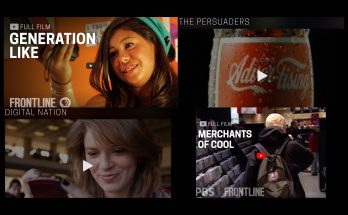“The Dawn of Twitter and the Age of Awareness”
WIRED, September 10, 2018
Business
By Clive Thompson
“Status update: We are all now sci-fi telepaths, deafened by the blaring thoughts of humanity.”
When it came into being in 2006, Twitter seemed perplexing. Publishing teensy, 140-character updates? Whatever was that good for? Twitter seemed like a ghastly mashup of the preening narcissism and nanosecond attention spans that defined the worst trends in digital culture. Tim Ferriss, writer of productivity books, called it “pointless email on steroids.” Who cares what you had for lunch? But critics misunderstood it. What Twitter truly portended wasn’t small, it was huge. As I argued in my first-ever WIRED column more than a decade ago, Twitter represented a massive shift in the way we pay attention to one another. The status update took off and we entered the era we still inhabit: the age of awareness.
Before the age of awareness, people conversed via blog posts, threads in discussion forums, email chains. You read someone’s missive, pondered it, wrote back. It was newfangled and digital, sure, but it nonetheless echoed the tempo of industrial life—the postal service in the Victorian period, bickering with fellow citizens in letters to the editor. Utterances were infrequent and somewhat lengthy.
Twitter inverted that proposition. The posts were microscopic, and they came in a constant spray. Sure, each update was so short as to seem meaningless, if considered on its own. But that’s the thing: Their power was in the aggregate. Follow someone’s updates for weeks, months, or years and you’d develop a rich sense of that person’s internal life. It was like hearing them think out loud, all day long.
Or, like a “superpower, like a sixth sense or something,” as Biz Stone, the Twitter cofounder, told me in 2008. “I know where everyone is. I know what their current mood is.” The status update allowed people to engage in flocking behaviors, both online and off. Twitter made flash mobs a part of life. “You become like a macroorganism,” Stone said.
Pretty soon it wasn’t just Twitter. All social media reformed itself around the status update: Facebook’s News Feed became a stream of just-in-time missives; Instagram, a stream of photos. (Tim Ferriss joined Twitter and now has 1.54 million followers.)
…
Our global attention was now fully cyborg, which meant, of course, that it was hackable. Political actors of all stripes neatly intuited this—from #blacklivesmatter activists moved to action by Trayvon Martin’s death to #gamergate’s venomous nerds dog-piling on Anita Sarkeesian. News stopped being something you looked at occasionally; it was live and interactive, all day long. Something could blow up into the national consciousness at any instant, Andy Warhol’s 15 minutes of fame compressed to 15 seconds.
Which is, really, the subtlest problem of our status world: It has made us prisoners of the here and now. Status updates work on two levels: We get insight into individual brains over the long haul, and there’s always some new piece of gossip, some OMG moment to react to. It becomes hard to look away. Harold Innis, the Canadian media theorist who laid the groundwork for Marshall McLuhan’s thinking, famously predicted that modern media would make us “present-minded,” unable to focus on anything except what’s happening right now. Bingo. President Trump, in this sense, is a leader for our times: He’s a master at using a single outrageous tweet to instantly hijack the nation’s consciousness.
About the Author:
Clive Thompson is a longtime columnist for WIRED.






